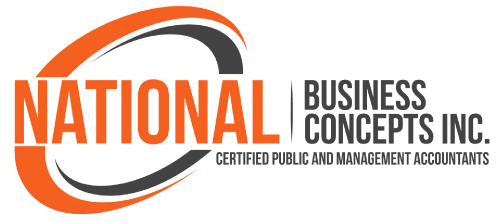Cash Flow vs Profit The Puzzle
There are times or occasions when cash flow is more important than profit. Cash flow measures actual money movement; profit measures GAAP accounting earnings shown on an income statement. Cash flow reflects liquidity—whether a business can pay its bills and survive short-term shocks; whilst profit reflects performance—how well a business is doing on paper—an indicator typically used by Wall Street investors. Investors and regulators supplement profit, i.e., net income, with cash flow metrics to assess sustainability and true economic performance beyond the constraints of accounting rules. Importantly, cash flow becomes a more important metric than profit in any situation where liquidity determines survival, risk, reinvestment, forensic scrutiny, or strategic flexibility.
Cash Flow
But consider that there are several cash flow metrics: Cash flow from operations (CFO), free cash flow (FCF), free cash flow to the Firm (FCFF), and free cash flow to equity (FCFE) are all measures of a company’s liquidity and financial health, but they differ in scope, purpose, and audience. Here we’ll employ FCF, partly because this metric is simple, direct, and avoids assumptions about interest, taxes, or capital structure, and builds on CFO (net income + non-cash charges – Δ working capital) by subtracting capital expenditures (CapEx), which are necessary to maintain or grow the business. FCF = CFO – CapEx or FCF = net income + non-cash charges – Δ working capital – CapEx. This metric shows how much cash is truly “free” to be used for dividends, debt repayment, or reinvestment. It is particularly useful for assessing a company’s ability to self-finance its growth without relying on external capital.
Profit
The juxtaposed metric, Generally Accepted Accounting Principles (GAAP) defines profit as the net income, standard for U.S. companies to report financial performance. It begins with total revenues and subtracts all recognized expenses, including cost of goods sold, operating expenses, interest, taxes, and non-cash items like depreciation and amortization. GAAP emphasizes the accrual basis of accounting, meaning revenues and expenses are recorded when earned or incurred—not when cash changes hands. This allows for matching income with related costs, but it can obscure actual liquidity. GAAP profit includes several layers: gross profit, operating profit, and net profit, each offering different insights into a company’s financial health. However, this metric can be influenced by accounting choices, estimates, and timing differences.
Early-Stage or High-Growth Businesses
Continuing, in early-stage or high-growth businesses, cash flow is paramount because these companies often operate at a loss while scaling. Startups may show negative net income for years due to upfront investments in technology, talent, and market acquisition. However, if they manage their cash burn effectively—through venture capital, customer prepayments, or lean operations—they can survive and grow. Amazon is a classic example: it posted years of accounting losses but maintained strong operating cash flow by collecting from customers before paying suppliers, allowing it to reinvest aggressively without collapsing.
Turnaround or Distressed Situations
Turnaround or distressed situations also elevate cash flow above profit. A company in crisis may need to restructure debt, renegotiate contracts, or downsize operations. In these cases, profit is often negative or unreliable due to one-time charges and accounting adjustments. What matters is whether the business can generate enough cash to meet obligations and fund the transition. For example, a struggling retailer closing stores may report losses but still generate positive cash flow from inventory liquidation and cost-cutting, giving it a lifeline to stabilize.
Highly Leveraged Businesses
Highly leveraged businesses—those with significant debt—must prioritize cash flow to service interest and principal payments. Profit may look healthy on paper, but if cash isn’t available when payments are due, the company risks default. Lenders and credit analysts focus on operating cash flow and EBITDA as indicators of repayment capacity. Private equity-owned firms often fall into this category, where leverage amplifies returns but also increases liquidity risk. A profitable firm with poor cash flow can quickly become insolvent if it misses debt covenants or payment deadlines.
Forensic or Asset Protection Contexts
In forensic or asset protection contexts, cash flow provides a clearer picture of financial behaviour than profit. When tracing hidden assets, investigating fraud, or analysing control dynamics in divorce or litigation, cash flow reveals actual movement—what was paid, received, or diverted. A business may report low profit but show large unexplained cash outflows, suggesting off-book transactions or asset shielding. Forensic accountants often reconstruct cash flow to uncover manipulation, especially when accrual entries obscure the real story.
Capital-Intensive Industries
Capital-intensive industries, such as manufacturing, construction, or energy, rely heavily on cash flow to fund long project cycles and asset maintenance. These sectors often face timing mismatches between revenue recognition and cash collection. A construction firm may be profitable on paper due to percentage-of-completion accounting, but if clients delay payments, it may lack the cash to pay subcontractors or buy materials. In such cases, managing working capital and cash flow is essential to avoid operational breakdowns.
Tax Planning and Entity Structuring
Finally, in tax planning and entity structuring, cash flow often drives strategic decisions more than profit. Certain business structures—like LLCs, LPs, and S-Corps—pass income through to owners, who may owe taxes on profits even if no cash is distributed. This creates “phantom income” risk, where owners face tax liabilities without liquidity. Structuring entities to align taxable income with distributable cash flow is critical. Similarly, nonprofits and B-Corps must manage cash flow to sustain mission activities, even if their profit metrics are constrained by purpose-driven mandates.
Conclusions
Cash flow outweighs profit when liquidity drives survival, control, and strategic action. In startups, distressed firms, leveraged entities, capital-intensive industries, forensic investigations, and tax planning, real-time cash movement reveals operational health and flexibility. Unlike profit, which reflects accrual-based performance, cash flow shows whether a business can fund growth, meet obligations, or shield assets. It’s the decisive metric when timing and resilience matter most.
By Richard Thomas


